Code red for humanity. That’s how the Intergovernmental Panel on Climate Change (IPCC) described its August climate report. What can rail freight do to help avert catastrophic climate impacts?
It already does a lot by cutting the carbon from seven million lorry journeys a year, saving an estimated one million tonnes of CO2. Even freight moved by rail with diesel power emits 76% less carbon than road haulage, while HGVs accounted for 16% of 2019 domestic greenhouse gas emissions.
Opinion differs on which initiatives will have the quickest and greatest effect on carbon reduction, but there is consensus on two things: that government has the power to make things happen very quickly; and that commercial and environmental circumstances are more favourable for rail freight than in decades.
Rail freight is becoming cheaper and more efficient with longer trains. Unit costs are coming down as road haulage costs are going up. The ban on the sale of non-zero-emission HGVs from 2040 must also influence modal thinking, in the absence of practicable alternatives to diesel HGVs.
Moreover, companies are seeing the use of rail as a way of fulfilling their own commitments to reducing emissions, by decarbonising their supply chains. For example, IKEA in collaboration with Maersk, switched to rail for a flow as short as 100km between the port of Barcelona and Tarragona for its distribution centre at Valls, as part of its drive to “become climate positive by 2030”.
Action to achieve quick wins falls into three categories: things that the rail freight industry can do to reduce its own carbon emissions; measures that would accelerate modal shift; and (most dramatically) the modest, relatively quick investments that would allow electric locomotives to take over long hauls from diesel traction.
But first, what does the Department for Transport’s Decarbonising Transport: A Better, Greener Britain set out? The DfT’s report has been broadly welcomed for its unambiguous promises:
■ “…relatively short stretches of new infill electrification could allow a significant rise in the electric haulage of freight. We will pursue such electrification to maximise the benefits gained from rail freight.”
■ “The Plan for Rail will encourage more freight onto rail from roads, reducing emissions. We will support this by providing the right conditions for the rail freight industry to grow with better co-ordination, modern contracts, and new safeguards.”
■ “…we are committed to introducing a rail freight growth target for all areas of the network DfT oversees, to encourage the continued growth of rail freight. … Great British Railways will also have a statutory duty to promote rail freight.”
■ “We will use TDNS to guide our work with partners across the rail sector to deliver an affordable, deliverable programme to fully decarbonise our railway.”
■ “A commitment to build extra capacity on our rail network to meet growing demand for rail freight and to support further modal shift of freight from road to rail.”
Cutting traction emissions
Until a traffic flow can be electric-hauled, a significant technical measure taken by freight operating companies to reduce carbon is experiments with fuels as a substitute for red diesel.
The most high-profile tests have been DB Cargo’s trials at Toton with 100% renewable Hydro-treated Vegetable Oil (HVO). These have proved so successful that the company has already committed to its use in a new traffic flow.
Carbon reductions of up to 90% are claimed for the Class 66s undergoing trials in traffic, before the start of a new return-loaded automotive service conveying Toyota cars between Toton, France and the Czech Republic. Subject to planning approval, the thrice-weekly service will begin in January.
The potential savings from use of the biodegradable fuel are significant. DB Cargo currently uses 45 million litres of red diesel a year, whereas HVO is derived from 100% waste products and no virgin products are used in its manufacture.
Among the DfT’s ‘First of a Kind’ grants for ideas to create a lower-emission and greener railway was Freightliner’s experiments using a mix of diesel, hydrogen and biogas with precision injection technology. The exhaust emissions from the Leeds-based Class 66 are being assessed by RSSB. And if successful, the results will be on the open market, as ‘First of a Kind’ ideas will not become intellectual property.
StopStart technology is now common, and according to Voith can save 11,000 litres of fuel per locomotive a year, based on reducing idling time by 720 hours per year.
Of course, the best solution to idling is to minimise the time spent in loops to allow faster trains to overtake. This is one facet of a modelling system called NR+, which has been created by the University of Hull’s Logistics Institute (another beneficiary of a ‘First of a Kind’ grant).
Holding such data as the gradient profile of every NR route, loading gauge, weight restrictions, route availability and even engineering possessions, NR+ calculates the carbon emissions of freight trips by different routes. It saves time and increases the efficiency of train pathing.
Another way to reduce idling is to explore the scope for thinning passenger frequencies at times of low demand, if it would create a robust freight path.
Transport Scotland Director of Rail Bill Reeve suggests: “One of the best things we as the franchising authority can do is to agree to amend a passenger specification to facilitate new freight business. If it’s a well-used peak-hour passenger train we wouldn’t do it, but if a lightly loaded train makes way for 40 to 50 containers, it’s a no-brainer.”
This would require the DfT (in England and Wales) to de-specify the services, but it’s obvious that it will be some years before passenger numbers return to pre-COVID levels.
And the benefits are not just reduced idling times or avoiding the energy use in restarting a train of anything up to 4,000 tonnes. Non-stop running also improves the circulation of locomotives and wagons and reduces driver diagrams, lowering unit cost and helping modal shift.
Richard Moody, NR’s Head of Strategic Planning (Freight & Network Strategy), acknowledges the politics behind the idea, since containers don’t vote.
However, he adds: “We found that on the top ten axes, the scope for freight substitution was 30 circulations a day. It’s a modest number, but it would reduce carbon emissions by about 150,000 tonnes pa, which has captured the DfT’s attention.”
In a study by Deloitte for the Rail Delivery Group, examining the role and value of rail freight, the benefits offered by different services was compared. In one example, an intermodal service generated benefits of £1.3 million pa against off-peak passenger train benefits of £170,000.
Driving modal shift
Because carbon-intensive HGVs and vans make up 46% of emissions from road transport, modal shift is potentially the most promising way to dramatically reduce freight’s emissions.
The oldest lever to encourage modal shift is the Freight Facilities Grant (FFG) scheme, created under the 1974 Railways Act to fund new connections between running lines and terminals/sidings. Only in Scotland is it still in use, and although it is offered by the Welsh Government, there is no budget for the scheme in Wales.
FFGs provided match funding for up to 50% of the capital cost, and that was recoverable if the traffic did not materialise. Guy Bates, Head of Freight Development at Network Rail, sees scope for their revival with a different structure that would recognise the value of decarbonisation benefits.
“The capital upfront cost of a new main line connection can be hefty. NR/Great British Railways could either put the money in and charge a rent for the area that is being used, or we could discount the rent for a term so that the third-party is able to invest. This property-related mechanism would work unless the costs are too high ever to recover them through rent.
“Another approach is to look at socio-economic value, as we do for network enhancements today, which would be reflected in the business case for an injection of public money.
“What we have never done is to blend those two mechanisms by saying we can recover half the cost of a project through a long-term rental agreement and the other half through socio-economic benefit. If we did that, we could potentially have a tool to facilitate the realisation of the many more terminal facilities we need. Paying rent encourages use, too.
“The socio-economic tranche would be predicated on a certain amount of traffic arising in order to realise the anticipated socio-economic and environmental value. It would be subject to a claw-back if the traffic didn’t materialise and the public didn’t get the cleaner air they had paid for.
“The tools we need already exist - it’s a question of how we agree we are going to apply them in combination to best effect. Because they are in different spheres at the moment - one calculus for network enhancements and another for the property portfolio - they need bringing together to make it work.”
The Mode Shift Revenue Support (MSRS) scheme was introduced in 2010 to tip finely balanced flows of intermodal and bulk traffic in favour of rail in all three countries, and a 2020 DfT report recommended its retention subject to improvements. The grants total has never exceeded £20m a year and has been oversubscribed every year.
Maggie Simpson OBE, Director General of the Rail Freight Group, believes that even a small increase would “tip some flows into viability, such as Immingham-Doncaster International Railport, now with customer clearance for inland border checks, and some trans-Pennine and South West flows. A mechanism that pump-primed a new service and tapered as it becomes established would be helpful.”
Julian Worth, chairman of the Rail Freight Forum of the Chartered Institute of Logistics, sees the potential for immediate change: “These are established procedures, so we could simply increase the trivially small budget to see an effect in this financial year.”
Bates takes the view that we should also be enabling train operation in a way that is economically robust, helping by providing infrastructure, paths and facilities that allow freight operators to be competitive rather than merely subventing the operational status quo.
“Equally, there is mileage in how you play tunes with the rates of access you charge for traffic during defined trials and/or initial start-up periods,” he says.
“If there are some concessions for new-to-rail traffic while the operator is beginning to build commercial momentum, that would seem entirely appropriate. We are entitled to do this today, but to date it’s been ad hoc.
“We are looking at establishing a clear and administratively simple procedure with a view to stimulating the market, encouraging innovative new traffic on new axes by offering some critical initial commercial breathing space.”
One of the most interesting and positive initiatives recommended by the National Infrastructure Commission’s Better Delivery report has been the work by NR and National Highways (formerly Highways England) on the Solent to the Midlands Multimodal Freight Strategy, published in June.
Working with wider stakeholders, including the freight, transport and logistics industry and sub-national transport bodies, it looks at potential new markets for rail as well as investigating the scope for modal shift in food and drink, chemicals, secondary materials and waste, aggregates, mail and parcels.
For instance, a large percentage of cars and vans produced at Cowley, Halewood and Castle Bromwich are exported through Southampton Docks. But only a third of the cars exported through Southampton are delivered by rail, and none of the imported vehicles for distributors.
The analysis will help inform multi-modal investment decisions at a time when National Highways is increasingly concerned by the life-expired parts of the oldest motorways and keen to see a reduction in the heaviest stresses. The question becomes: which capacity enhancements cost less and deliver the greatest economic and environmental benefits?
Along with multi-modal studies goes the need for a changed mindset, both among logisticians accustomed to thinking solely of tyres and tarmac and among railway staff whose focus may have been exclusively on the betterment of the passenger railway. Some railway managers even regarded freight as compromising their performance targets for passenger trains, and so hindered its development.
“We need people in rail freight who understand what is required by the supply chain,” says Worth.
“Logisticians talk a different language - about product lines, roll cages and pallets, not containers and trains. Bilingual professionals can work with aggregators like W H Malcolm and Russell Logistics on Anglo-Scottish traffic and Maritime Transport to fill multi-customer services.
“This is vital, since no more than a quarter to a third of freight trains are likely to be trainload from a single customer. It’s a great asset to have experience across the industry, someone like Jess Lippett who has worked for DB Cargo, Tarmac and is now a Senior Route Freight Manager at NR.”
In Scotland, a catalyst for attitudinal change in rail freight was the introduction in 2017 of modal shift targets and the requirement for NR to apply “all levers at its disposal to make the use of rail freight attractive to business across Scotland”.
Says Reeve: “Targets end the attitude of some managers that they had no role in promoting rail freight. Marking score cards on success in introducing new freight ensures senior-level discussions and affects investment decisions.
“It has concentrated minds and changed behaviour. You have to be cleverer than saying ‘you must run more tonne/miles’ because organic growth may happen. The object is to attract new business such as Highland Spring with its new rail connection at Blackford. Creating a climate in which people are excited by the prospect of winning new rail freight traffic is a necessary condition for success.”
The High Level Output Specification requires “all reasonable steps to be taken to facilitate growth of 7.5% in rail freight traffic carried on the Scotland route, of which at least 7.5% will represent a growth in new business (new traffic flows, not previously moving by rail)”.
The DfT has promised modal shift targets for NR in England and Wales in Decarbonising Transport, but details are unknown.
NR’s Richard Moody believes we should align the new targets for England and Wales with Scotland, to avoid disparities. He echoes Bill Reeve in seeing them as a game-changer, with GBR hopefully emulating the joined-up approach between NR, Transport Scotland and ScotRail in meeting targets most efficiently.
Because of the potential for long distances, services through the Channel Tunnel can make a substantial contribution to carbon reduction. DB Cargo’s new automotive service reaching the Czech Republic will carry 230 cars in each direction, removing 46 road transporter journeys.
Driver shortages on the continent are as serious as in the UK, and Guy Bates thinks it’s high time we addressed the gauging handicaps of the classic route from Dollands Moor (near Dover) to Wembley.
“We are essentially still stuck in the early 1990s, which excludes most of the market. S44 swap bodies will fit within the loading gauge, but we cannot accommodate S45s. When you round up an imperial 9ft 6in high swap body to centimetres and millimetres, it comes out plated as an S45, though empirical evidence suggests that actually they are slightly smaller and should fit.
“Nonetheless, there is a need to at least do some incremental gauging work to allow S45s formally to use the route. That would usefully broaden the addressable market for rail and push open the door for new Channel Tunnel intermodal traffic.”
Julian Worth adds: “The use of HS1 to Barking for freight would also be highly beneficial, enabling use of the massive continental-gauge intermodal wagon fleet. A simple lift onto UK-gauge wagons at Barking would enable swap bodies to move forward to the Midlands, the North, Wales and Scotland.”
Another imminent contribution to carbon reduction is the revival of high-speed freight/parcels traffic by Orion and Varamis Rail. Success in this competitive market by exploiting rail’s speed and reliability could be quickly scaled up, thanks to the relatively simple conversion of available ex-passenger EMUs to cater for roll cages and pallets.
The sparks effect
This term has been applied to the increases in passenger numbers generated by electric trains. But the impact of electric haulage on freight is just as significant, if different in character.
Wires create multiple wins. Besides decarbonising, it is the most effective and cost-efficient way to increase network capacity while also reducing operating and maintenance costs.
Electrification in Scotland could be encouraged by the HLOS requirement to “increase the average speed of freight trains by not less than 10% through good operational practices, including timetabling exercises and programmes”.
The NIC’s Better Delivery report agrees. Besides exposing the impracticalities of e-motorways, the report concludes that “considering the potential wider costs involved in other methods of decarbonising rail freight, electrification could turn out to be cheaper and quicker, improving network efficiency and providing wider benefits for passenger services”.
Bill Reeve argues: “Electrification allows you to derive enough power for heavy trains to run fast on a high-performing network, which means that on a mixed-traffic railway you can run more trains on the existing infrastructure. This saves investment in loops and all the drawbacks of slowing down, idling in a loop and restarting. By reducing the speed disparity between types of train, wiring helps timetable flighting and delivers capacity.
“The capacity benefits are also true of a single-line railway. On the Highland Main Line, the balancing speed of a reasonable-length intermodal with a Class 66 on key gradients is about 18mph, despite the relatively light weight of most boxes. It takes a long time to clear a single-line section.”
Although infill schemes top the wish list for electrification, there is no point in wires without adequate current, so power supply has to go hand in hand. The most egregious case is the number of freight and passenger trains that cannot use electric traction under the wires north of York for want of power.
Richard Moody sees the prime infill candidates as: Felixstowe-Ipswich; the Tilbury Loop to London Gateway; Acton Bank; the 18 miles from Hare Park Junction to Stourton Freightliner Terminal; Birmingham to Nuneaton for Hams Hall off the West Coast Main Line; and wiring reception roads at Trafford Park to allow through running. NR is quantifying the carbon benefits of the schemes.
Judiciously chosen infill schemes could allow another 50 to 60 freight trains a day to switch to electric haulage, which leads to the question of locomotive and wagon availability.
Julian Worth sees the return to service of locomotives in warm storage: “Principally Class 90s and ‘92s’ but also ‘91s’ - they were provided with a cab at the blunt end because they were intended to do Freightliner container trains on the East Coast Main Line at night. They could be re-geared to improve freight capability.
“The big win with wagons is the W9 gauge enhancements needed to allow the large megafret fleet to work on a route with high-cube containers. We need only W8 clearance for very low-floor wagons on routes that can’t justify more. With gauge clearance on routes such as the Great Western Main Line, we can look forward to a cascade of small-wheeled wagons for new services on lower-volume axes such as the South West.”
Although gauge clearance may not be seen as a short-term win, the work required on the trans-Pennine route is limited to Stalybridge, Scouts and Catherine Street tunnels, and three or four minor bridges which will have to be rebuilt anyway for electrification. That work has the potential to allow 15 freight trains a day in each direction, taking more than 1,000 lorries a day off the heavily congested M62/M60.
To create confidence and unlock investment, the industry urgently needs that green light from government to start a rolling, sustainable programme of electrification.
Since infill electrification has been promised in two government reports, Maggie Simpson is confident it will be authorised. But every tonne of carbon saved this year represents 29 tonnes by 2050. There’s no time like the present when it comes to the climate crisis.
The glittering prizes
Various studies have calculated that about a third of HGV tonne mileage is very realistically transferrable to rail - about 200 million tonnes a year and roughly a trebling of today’s figure.
“For most main lines, that would represent one or two extra freights an hour in each direction over an 18-hour day, which shouldn’t scare the horses,” argues Julian Worth.
“The two exceptions are the WCML and Felixstowe-Nuneaton, which would see three or four extra trains an hour. But a well-defined set of enhancements - sorting out Ely, doubling Soham and some of the Felixstowe branch, with four tracks through Leicester - could deliver another 60 trains a day for Felixstowe boxes and some aggregates.”
It is to be hoped that the Treasury will recognise the scope for easy and quick progress in carbon reduction through intelligently targeted investments to allow rail freight to grow.
Worth suggests that the value of carbon used in appraisals should be increased to the $75 (£55) a tonne recommended by the International Monetary Fund - more than three times higher than currently used in the UK. Compared with the complexities and costs of carbon reduction through domestic heating changes, rail freight offers an abundance of low-hanging fruit at relatively modest cost.
Work is under way to create a strategic freight unit within GBR. For its success, Guy Bates sees the “need for more engagement with a broader range of stakeholders, looking to identify the market that doesn’t use rail but has the volume and interest to use it”.
He adds: “The unit needs to be engaged with the Sub-National Transport Bodies, which have a real appetite for modal shift and potentially have access to funding. They cover large areas of the country, and National Highways involvement would allow both road and rail to look at ways to make the best use of our networks in a co-ordinated manner.
“The challenge for GBR’s strategic freight unit will be how to bring parties to rail that currently aren’t. It could be existing traffics from quarries that currently have no rail connection or enabling rail to serve principal manufacturing centres.”
The Britishvolt battery gigaplant being built on a 135-hectare site at Port Blyth will be the fourth largest building in the UK, and Isobel Sheldon, chief strategy officer at Britishvolt, has cited the site’s rail link as a reason for the choice of location: “There’s an existing rail line in place, which previously had a branch into the power station when it was operational. This has been closed but can be reinstated, so products can be transported by rail.”
Guy Bates points to the fact that only 20% to 25% of our intermodal traffic is domestic, where rail has supplanted road for trunk haul movements feeding retail and supermarkets.
“We don’t have the disposition of intermodal interchanges we need. With a suitable commercial model - and we aren’t looking at colossal sums - we would be in a position to urgently progress a number of interchange schemes around the country to deliver modal shift more quickly.
“The prime areas are the South West, Lincolnshire and south of the Thames. Some will require participation of third parties. We know the traffic is there and we want to see those realised to create a market that corresponds to an ambitious target to grow rail freight. The impact on carbon reduction within national surface transport would be transformative.”

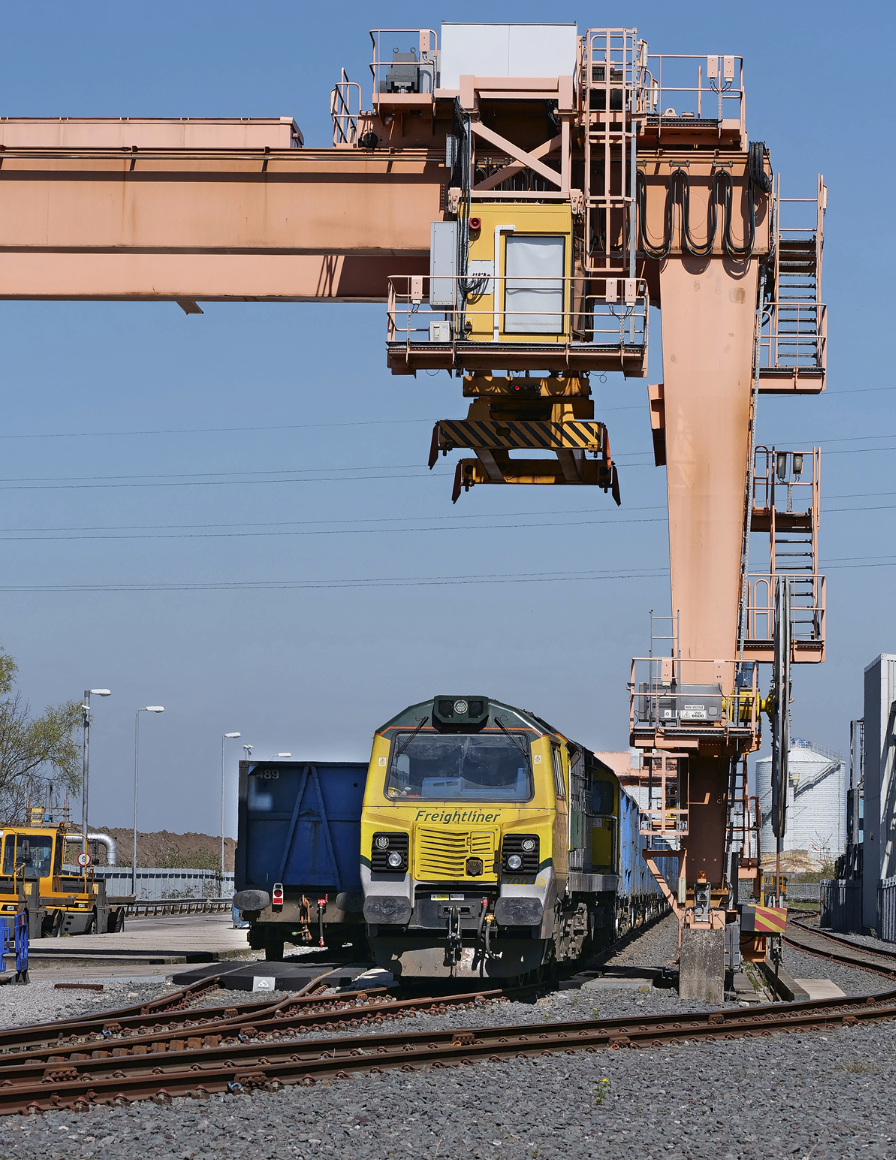
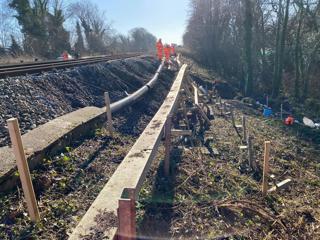
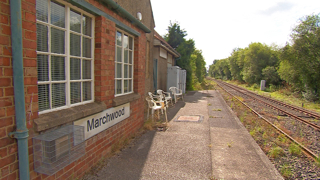
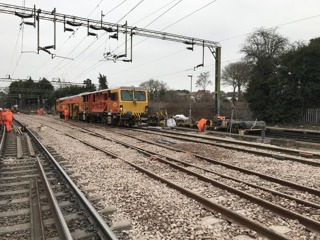
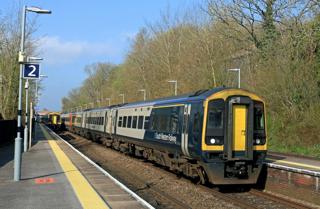
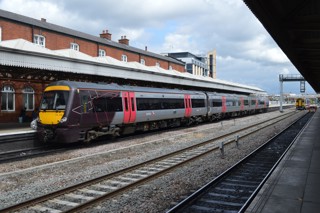











Login to comment
Comments
No comments have been made yet.